You’ll find several excellent free deep sky stacking options as a beginner astronomer. DeepSkyStacker offers user-friendly features with quality scoring to identify your best frames. Siril provides complete workflow capabilities with an active community. Sequator features intuitive star alignment specifically for DSLR astrophotography. ASTAP delivers precise star mapping with fast calibration. ASIDeepStack simplifies pre-processing with quick results. Each option balances processing speed with image quality to transform your noisy shots into detailed astronomical portraits.
Understanding Deep Sky Stacking for Beginners
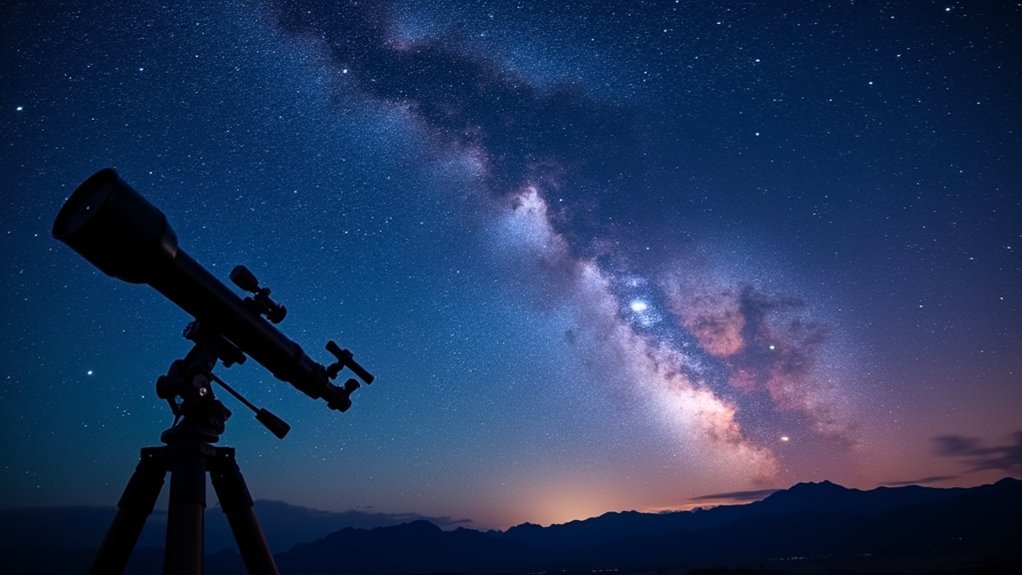
When you first point your telescope at the night sky and capture an image, you’ll likely be disappointed by the grainy, noisy result. That’s where deep sky stacking comes in. This technique combines multiple light frames of the same astronomical target to dramatically improve the signal-to-noise ratio.
The process works by aligning and median stacking your images, effectively canceling out random noise while preserving detail. For best results, you’ll need to capture calibration frames (dark, flat, and bias) alongside your light frames during pre-processing stages.
Free software options like DeepSkyStacker, Siril, and Sequator offer user-friendly interfaces perfect for beginners entering astrophotography.
Before stacking, use the scoring features to pre-qualify your images, ensuring only high quality images contribute to your final composite. This methodical approach transforms noisy single shots into detailed astronomical portraits.
DeepSkyStacker: The Popular Free Solution
For most beginner astronomers, DeepSkyStacker (DSS) represents the ideal entry point into astrophotography processing. This completely free software simplifies deep sky image enhancement by stacking multiple frames to improve signal-to-noise ratio.
You’ll appreciate DSS’s user-friendly interface that handles RAW files from most DSLRs while offering essential functions like calibration with dark frames and multiple stacking methods.
| Feature | Benefit | Beginner Tip |
|---|---|---|
| Quality scoring | Identifies best light frames | Keep 70-80% highest scoring frames |
| Multiple stacking methods | Customizable results | Start with average stacking |
| Dark/flat frame calibration | Reduces noise | Always shoot calibration frames |
| RAW file support | Preserves image data | Shoot in RAW, not JPEG |
| Version 5.1.0 updates | Latest enhancements | Download from official website |
Siril: Open-Source Powerhouse for Image Processing
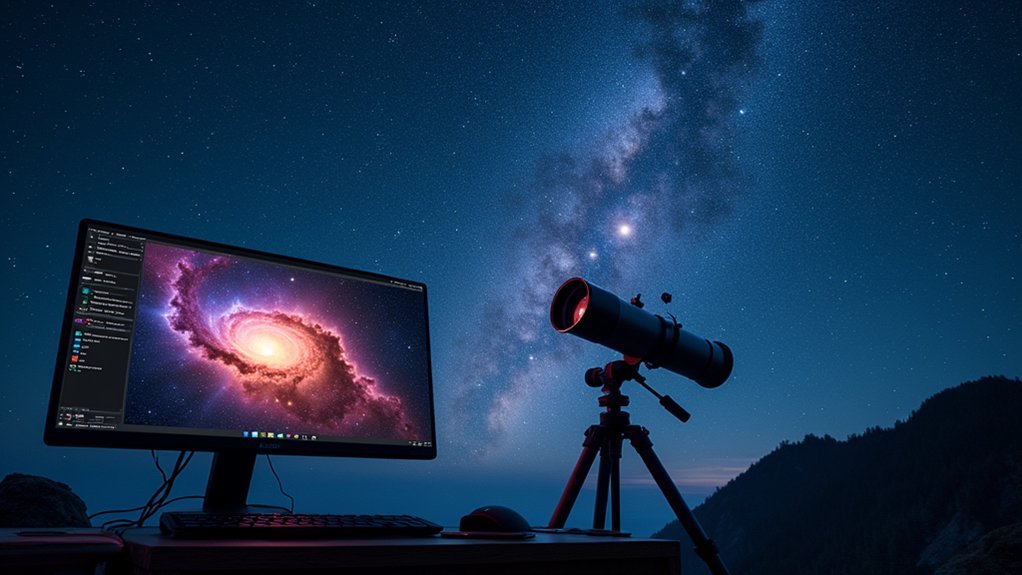
Three key advantages make Siril an exceptional alternative to DeepSkyStacker for beginner astronomers seeking more processing power. This cross-platform, open-source software specializes in deep sky image processing while offering thorough workflow capabilities from conversion to enhancement—all without cost.
Siril empowers beginners with professional-grade astrophotography processing in a free, cross-platform package built specifically for deep sky imaging.
- Complete workflow coverage – Handles everything from pre-processing and alignment to stacking and final image enhancement.
- Flexible operation modes – Work manually for learning or use scripts to automate repetitive tasks.
- Extensive format compatibility – Processes FITS, JPEG, PNG, and RAW DSLR images from virtually any astrophotography setup.
- Active community development – Regular updates and improvements based on user feedback guarantee the software evolves with astronomers’ needs.
You’ll appreciate Siril’s thoughtful design specifically for amateur astronomers pursuing deep sky astrophotography.
Sequator: Simplifying Stacking for DSLR Users
Sequator’s clean, intuitive interface eliminates the confusion you’ll often face with more complex stacking programs, allowing you to focus on your astronomy images rather than software settings.
You’ll appreciate how the program automatically identifies and aligns stars across your frames, saving you from tedious manual registration procedures.
This automated star registration works remarkably well even with wide-field nightscapes, making Sequator particularly valuable for DSLR astrophotographers who capture large portions of the night sky.
User-Friendly Interface Features
While many stacking programs overwhelm beginners with complex options, Sequator stands out with its remarkably intuitive interface designed specifically for DSLR astrophotography.
You’ll appreciate how the user-friendly interface simplifies the entire stacking process, allowing you to focus on capturing stunning images rather than wrestling with software.
Key features you’ll love:
- Drag-and-drop functionality that lets you import and organize your RAW images without maneuvering through complex menus
- Automated star detection that accurately identifies celestial objects with minimal manual adjustment
- Background noise reduction tools that clean up light pollution without destroying detail
- Rapid processing capabilities that transform your wide-field nightscapes and deep-sky images in minutes rather than hours
Automated Star Registration
The heart of Sequator’s power lies in its automated star registration system, which revolutionizes how beginners approach astrophotography stacking.
You’ll no longer struggle with complex alignment procedures—the software automatically identifies and aligns star patterns across your images, making the stacking process remarkably straightforward.
This intelligent feature allows DSLR users to stack images with minimal intervention, considerably improving your signal-to-noise ratio while reducing noise in the final composition.
When you’re processing multiple exposures from your astrophotography sessions, the user-friendly interface guides you through various processing options without overwhelming you with technical complexity.
The result? High-quality stacked images produced in a fraction of the time compared to manual methods.
You’ll achieve professional-looking results even as a beginner, allowing you to focus more on capturing the night sky than wrestling with software.
ASTAP: Precision Alignment and Plate Solving
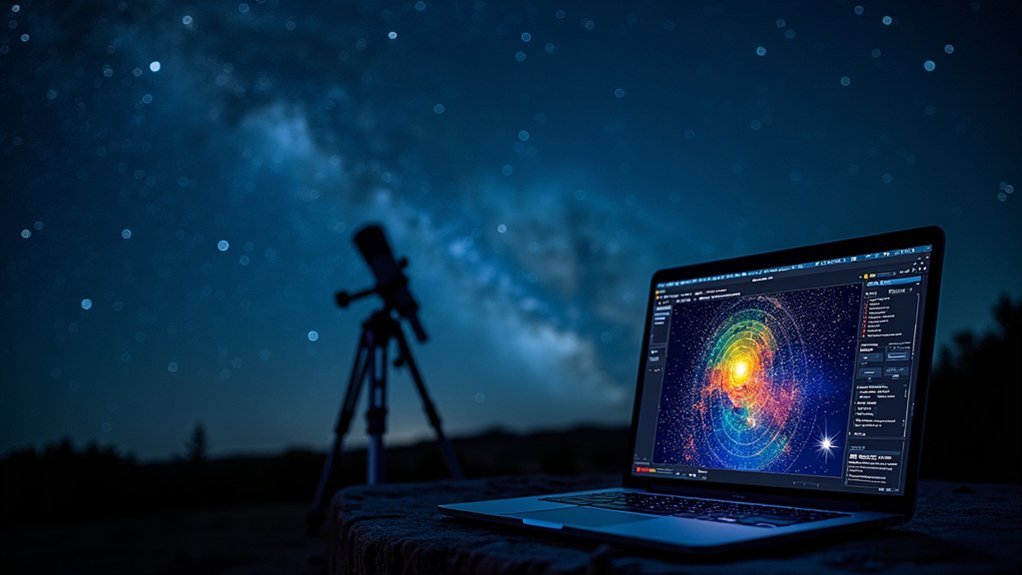
You’ll find ASTAP’s precise star mapping capabilities revolutionize your deep sky photography workflow, automatically identifying celestial patterns with remarkable accuracy.
Its fast automatic calibration eliminates the guesswork in aligning your images, letting you focus on capturing rather than post-processing.
ASTAP’s plate-solving technology works efficiently even with partially clouded frames, ensuring your stacking results maintain scientific precision regardless of variable imaging conditions.
Precise Star Mapping
For astronomers seeking highly accurate image alignment, ASTAP (Astrometric Stacking Program) offers sophisticated plate-solving capabilities that transform how beginners approach star mapping.
You’ll find this free tool integrates seamlessly with other stacking software, enhancing your astrophotography workflow with precise alignment techniques.
- User-friendly interface simplifies image registration, making advanced star mapping accessible even if you’re new to deep sky imaging.
- Supports multiple image formats including FITS and JPEG, ensuring compatibility with your existing equipment setup.
- Identifies celestial objects automatically through astrometric calculations, saving you time during post-processing.
- Improves overall quality of stacked images by ensuring perfect alignment of stars across multiple frames.
Fast Automatic Calibration
When calibrating deep sky images, ASTAP stands out as a game-changer for beginners with its remarkably fast automatic calibration system. This free software delivers precision alignment and plate solving capabilities that dramatically streamline your workflow.
You’ll appreciate how ASTAP quickly determines celestial coordinates for your images, an essential step for accurate stacking. Its user-friendly interface masks the complex processing happening behind the scenes, allowing you to achieve professional-quality results without advanced technical knowledge.
The software supports various image formats including FITS and JPEG, making it versatile for amateur astronomers at any skill level.
ASTAP’s automatic calibration features simplify the pre-processing steps in deep sky imaging, eliminating frustrating manual adjustments. It seamlessly integrates with other stacking programs, creating a cohesive system for transforming your raw captures into stunning astrophotography.
Getting Started With Asideepstack
Although many stacking programs can be overwhelming for beginners, ASIDeepStack offers a revitalizing accessible entry point into astrophotography processing.
You’ll appreciate the user-friendly interface that doesn’t require extensive technical knowledge to navigate, while still delivering impressive signal-to-noise ratio improvements in your final images.
- Download the free software and install it – it supports various camera formats, with exceptional compatibility for ZWO products.
- Import your image set and watch as processing times typically stay under 2 minutes.
- Use the intuitive controls to adjust stacking parameters without needing to understand complex algorithms.
- Join the active community for support when questions arise – regular updates guarantee you’ll benefit from continually improving features.
Comparing Performance: Speed vs. Quality in Free Software
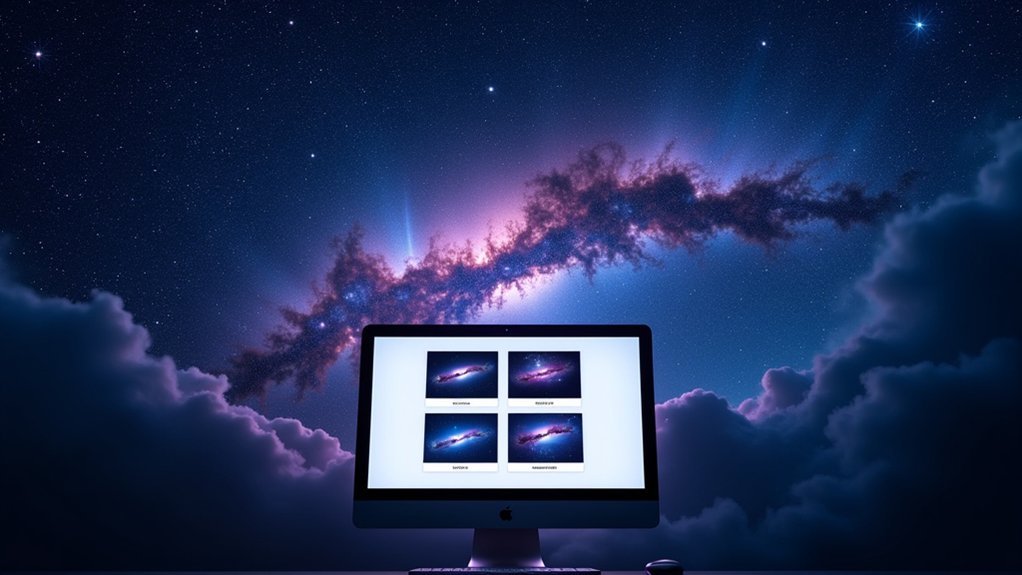
While searching for the perfect stacking software, you’ll quickly discover the fundamental trade-off between processing speed and final image quality. ASIDeepStack processes images in under 2 minutes, while PixInsight takes over 14 minutes for identical tasks.
DeepSkyStacker offers beginners an ideal balance – it’s user-friendly with clean results and reasonable processing time. Its kappa-sigma clipping method effectively removes satellite trails without sacrificing speed.
If you’re willing to use more disk space for advanced capabilities, Siril delivers impressive speed with extensive features. Meanwhile, Sequator provides a user-friendly interface with rapid processing specifically for deep-sky images.
When selecting stacking software, assess your priorities. If you’re just starting out, favor applications that combine decent image quality with faster processing times rather than complex algorithms that might overwhelm you.
Essential Stacking Workflows for Budget Setups
Now that you’ve considered speed versus quality, let’s focus on getting the most from budget equipment.
DeepSkyStacker offers amateur astrophotographers powerful image processing capabilities without costly investments. Your stacking workflow should include these critical elements:
- Organize images into specific folders (Lights, Darks, Flats, Offset/Bias) before importing them into DeepSkyStacker.
- Capture all calibration frames – light frames contain your target, dark frames reduce noise, flat frames correct vignetting.
- Apply kappa-sigma clipping to automatically remove satellite trails and other unwanted artifacts.
- Trust recommended settings – DeepSkyStacker’s defaults often produce excellent results for beginners.
This systematic approach guarantees maximum noise reduction while preserving detail, letting you achieve impressive results even with modest equipment.
Frequently Asked Questions
What Is the Easiest Astrophotography Stacking Program to Use?
DeepSkyStacker is your easiest option due to its user-friendly interface and fast processing. You’ll find it intuitive to navigate, and it won’t overwhelm you with complex settings as you begin your astrophotography journey.
Is Deep Sky Stacker Free?
Yes, DeepSkyStacker is completely free. You won’t need to pay anything to download or use it. It offers all its astrophotography stacking features at no cost, making it accessible to everyone.
How to Stack Images for Astrophotography for Free?
You can stack astrophotography images for free using DeepSkyStacker, Siril, or Sequator. Simply import your light, dark, and flat frames, align them, and apply median stacking to reduce noise and improve details.
How Much Does Siril Software Cost?
Siril doesn’t cost you anything—it’s completely free software. You can download it under the GPL3 license from siril.org without paying a penny. As an open-source project, it’s maintained by community contributions.
Is Sequator Free?
Yes, Sequator is completely free. You don’t need to pay anything to download or use this software for stacking your astrophotography images. It’s open-source and accessible to anyone interested in deep-sky imaging.
In Summary
You’ve now got a solid toolbox of free deep sky stacking options to begin your astrophotography journey. Whether you choose DeepSkyStacker’s reliability, Siril’s processing power, Sequator’s simplicity, or ASTAP’s precision, you don’t need expensive software to create stunning cosmic images. Start with basic workflows on your current equipment, and you’ll be amazed at what you can capture in our night sky.
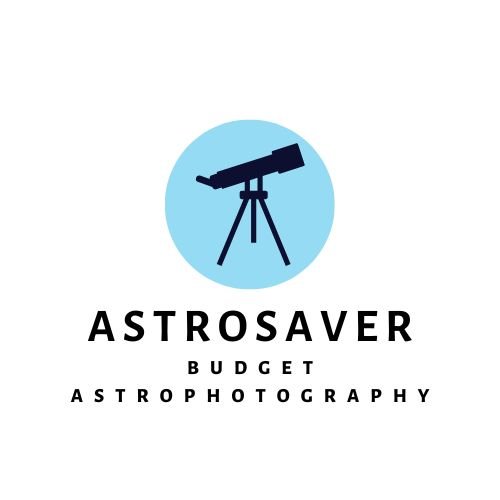

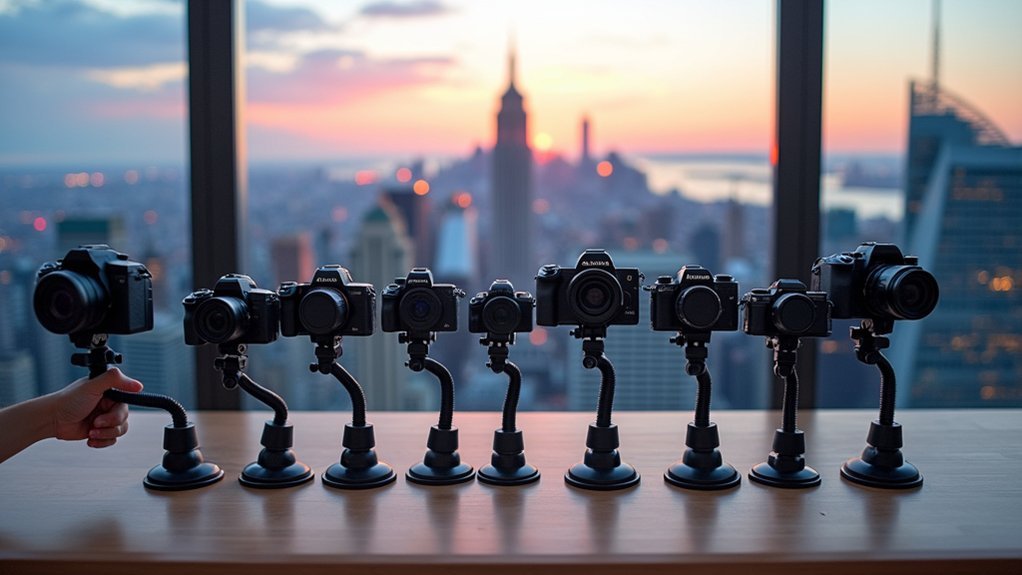

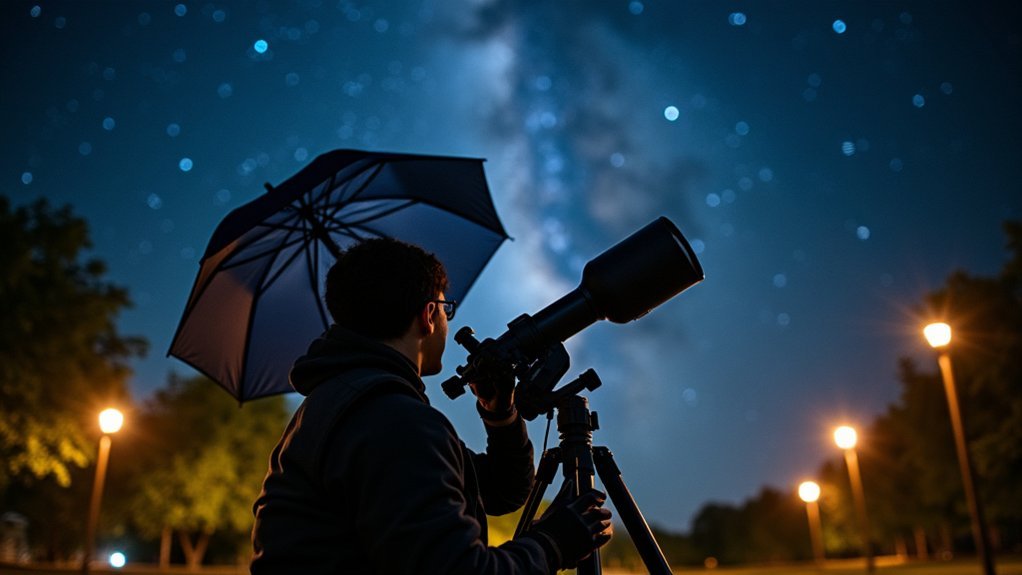
Leave a Reply